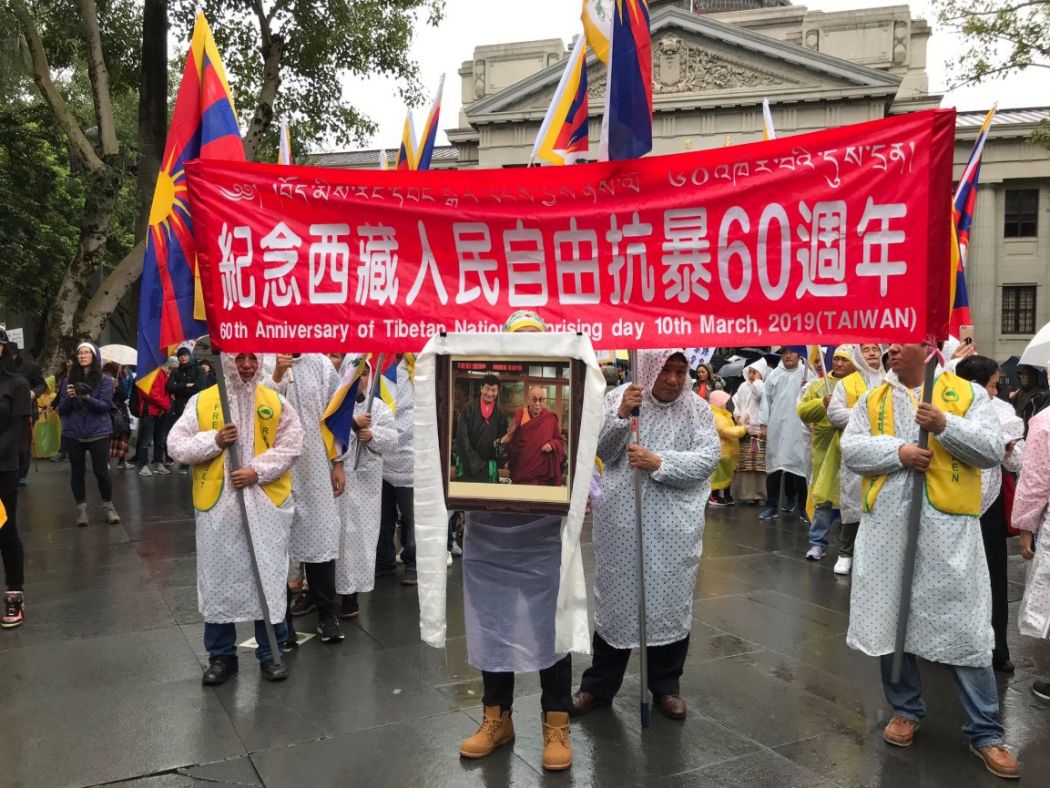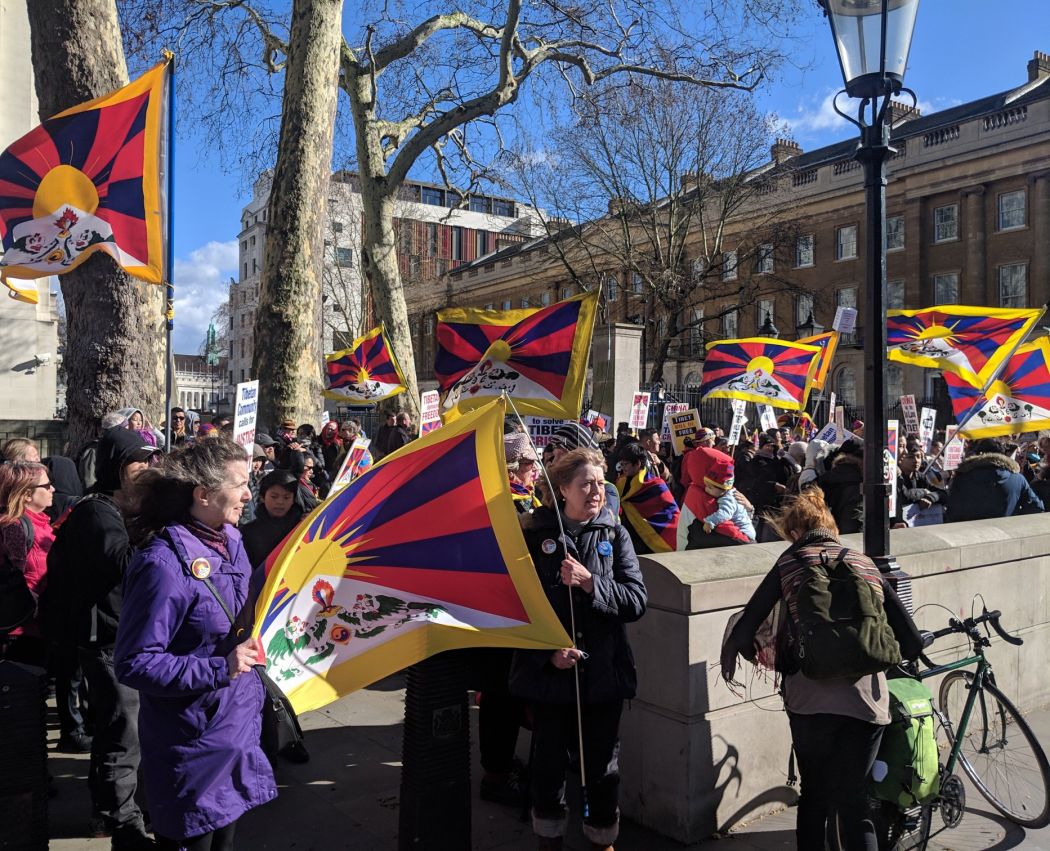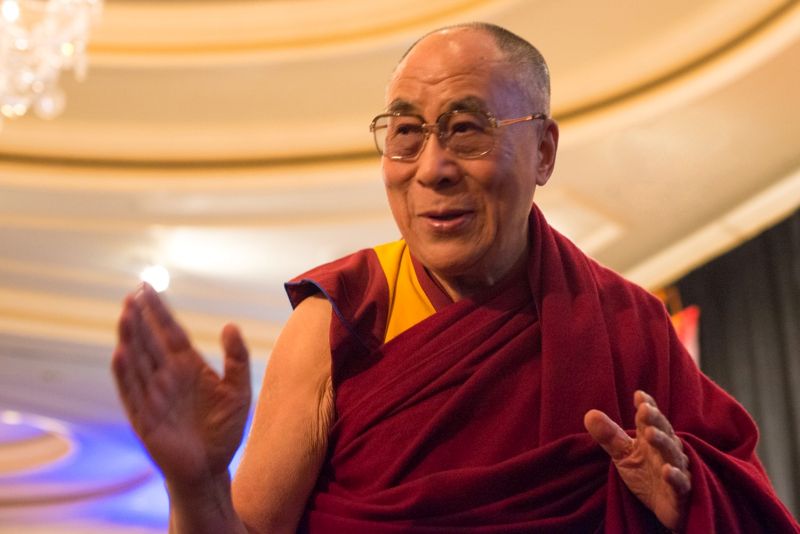Crowds gathered across the world in recent days to mark the 60th anniversary of the failed Tibetan uprising against Chinese rule.
In 1959, protests erupted in Lhasa outside the summer palace of the Tibetan spiritual leader, the Dalai Lama, in defiance of China’s occupation of the region. The movement ended with a bloody crackdown which forced the then-23-year-old Dalai Lama to flee to neighbouring India, where he has resided ever since. The Tibetan government-in-exile estimates that tens of thousands were killed during the Chinese military’s violent suppression.
Taiwan
Tibet supporters rallied together in Taipei to commemorate the 1959 uprising. The march began in the capital’s 228 Peace Memorial Park, which contains a memorial to victims of a brutal crackdown against civilians by the Kuomintang-led (KMT) Republic of China government.

Politicians from the ruling Democratic Progressive Party and independent New Power Party were reported to have used the occasion to warn of the consequences of strengthening relations with China.
In an interview last month with Washington-backed Voice of America, KMT Chair Wu Den-yih put forward the idea of a peace treaty with Beijing while resolutely opposing Taiwanese independence.
Live from the memorial march for the 60th anniversary of Tibetan uprising in #Taiwan. Several prominent activists and politicians emphasized the importance for #Taiwan to learn from Tibet’s experience of dealing with #Beijing, calling people not to compromise Taiwan’s democracy. pic.twitter.com/GeGcZa0A2i
— William Yang (@WilliamYang120) March 10, 2019
At the end of the march, demonstrators hung a white cloth – symbolising mourning – over a portrait of the Dalai Lama.
Japan
In Japan, Tibet supporters gathered in Tokyo chanting “Free Tibet” and carrying the iconic Tibetan “snow lion” flag, which was banned in China after 1959 for symbolising “separatism.”
The event was organised by NGO Students for Free Tibet in Japan and saw around 140 attendees.
India
In the country of the exiled 83-year-old Dalai Lama, a throng of supporters came out to his city of residence, Dharamsala, on the edge of the Himalayas. The spiritual leader himself did not attend the event.
In a speech at the Tibetan Buddhist temple in McLeod Ganj in Dharmasala, the government-in-exile President Lobsang Sangay called upon supporters across the world to come together to fight against Chinese “impunity.”
He also criticised the level of surveillance in the historic region, decried the continued detention Tibetan language activist Tashi Wangchuk, and repeated his administration’s commitment to “The Middle-Way Approach,” proposed by the Dalai Lama in the 1970s, which aims to “peacefully resolve” conflict between Chinese and Tibetan authorities over the region.
Tibet has transformed into a sprawling surveillance state under a system designed to forcibly assimilate its local population and culture.

In India’s capital of New Delhi, around 3,000 people were reported to have also marched in support of Tibet.
United States
Activists rallied from state to state in support of Tibet.
Thanks to the @CityOfBoston for flying the Tibetan flag at this time when Tibetans mark 60 years of resistance & the nonviolent struggle for human rights & freedom. pic.twitter.com/GTsu1jMPwP
— lhadon (@lhadon) March 10, 2019
In Massachusetts, the Tibetan Association of Boston hoisted the Tibetan flag alongside the US flag and the flag of Boston outside Boston City Hall, and received a letter of support from Senator Edward J. Markey. In California, activists commemorated the anniversary by protesting in front of the Consulate General of China in Los Angeles. And in the Utah state capital of Salt Lake City, marchers bore banners reading “China out of Tibet” and “Support Peace, Support Tibet.”
US House of Representatives Speaker Nancy Pelosi observed the anniversary in a statement on Friday saying: “On this important anniversary, we must renew the unbreakable bonds of friendship between the Tibetan people and the United States.”
She also expressed solidarity with Tibetans by saying that the country’s legislature will continue to take action to ensure peace in the region, such as building on the Reciprocal Access to Tibet Act – signed last December – which enables the US to impose visa bans on Chinese officials who do not allow American citizens to access the Tibetan region.
United Kingdom
Tibet supporters with banners reading “I stand with Tibet” and “Tibetans demand freedom” marched from 10 Downing Street in Westminster to the Chinese Embassy in Marylebone.

Australia
Activists of all ages came together in Sydney to protest outside of the Chinese embassy against what they said was the unlawful occupation of Tibetan land and continued oppression of Tibetans in the region. Smaller rallies in other cities such as Katoomba were noted in local media.
New generation #TibetanUprisingDay in Sydney #60yearsofresistance pic.twitter.com/oy7VqOyAFp
— Aust Tibet Council (@TibetCouncil) March 10, 2019
Germany
On Sunday, the Tibetan flag was raised in 391 cities and municipalities across Germany, following a campaign by Berlin-based NGO the Tibet Initiative.
“The human rights situation in Tibet has increasingly deteriorated since Xi Jinping came to power in 2013, despite our initial hopes for a new, dialogue-oriented Tibet policy of the Chinese government,” says Tibet Initiative director Nadine Baumann. “This especially concerns basic civil and political rights such as freedom of opinion, freedom of assembly and freedom of religion.”
TIBETAN FLAG ON GERMAN PARLIAMENT & BRANDENBURG GATE We say loud and clear: #Tibet is not forgotten! 60th anniversary of uprising & oppression: German policy makers must stand up for human rights in Tibet. Donate now: https://t.co/Xx0ikdmr5N #10March Credits Dirk-M. Heinzelmann pic.twitter.com/TBHDB8lnbX
— Tibet Initiative (@tibetinitiative) March 10, 2019
Protest rallies were held in front of the country’s Chinese consulates in Munich, Hamburg and Frankfurt. A demonstration was also held outside of the Chinese Embassy.

Meanwhile, China’s official Xinhua news agency said in an editorial on Saturday – the day before the anniversary – that Tibetans have enjoyed “unprecedented human rights” since 1959. The article did not make any reference to the uprising or violent crackdown that ensued.
